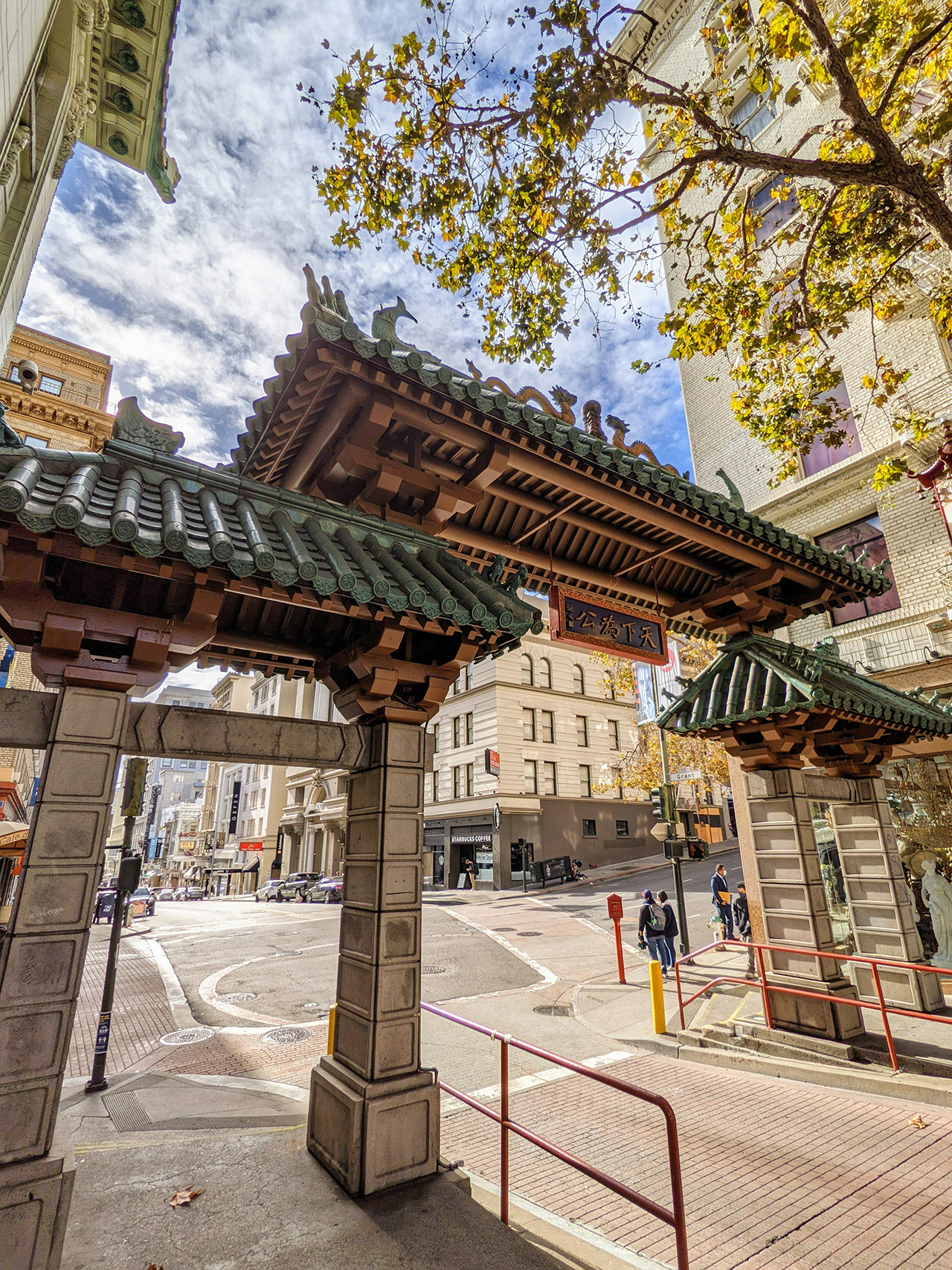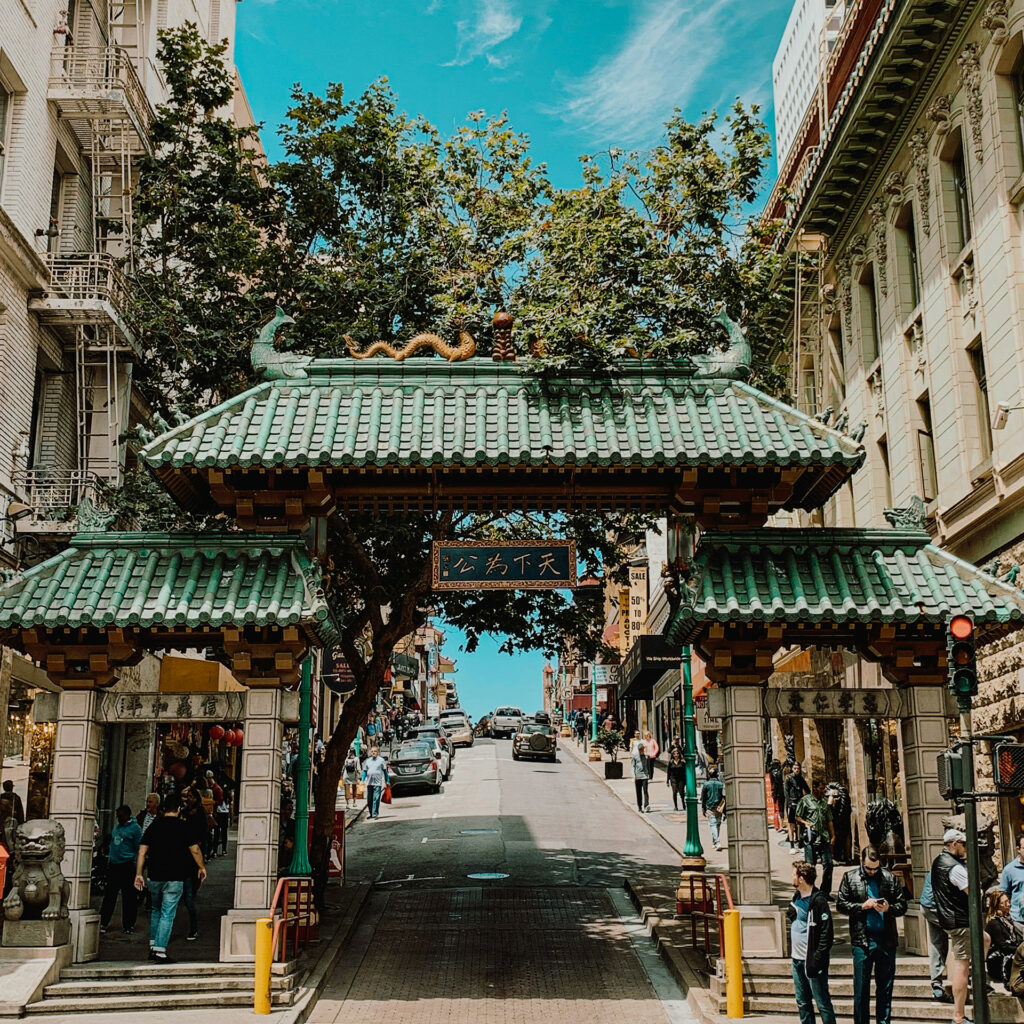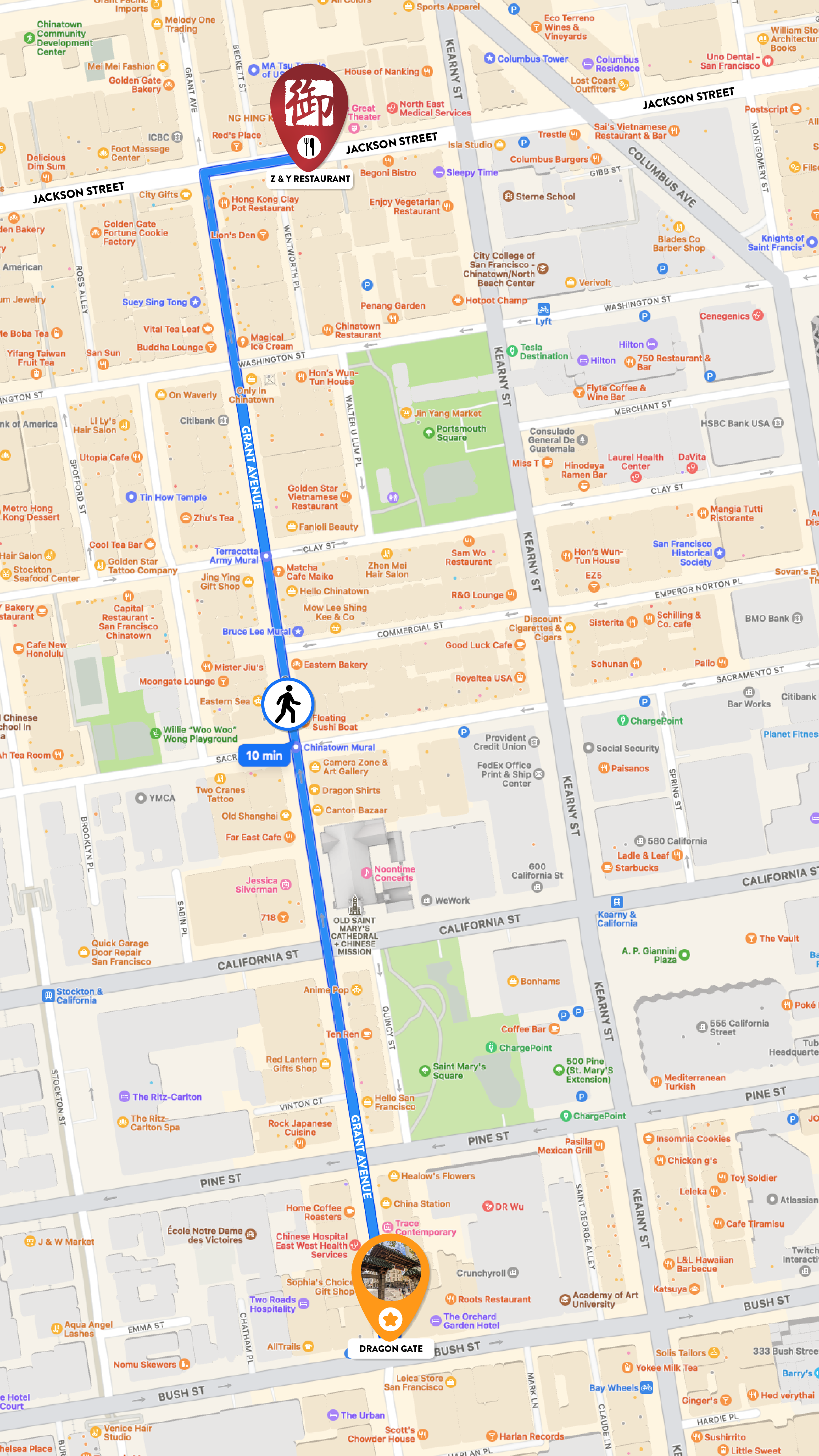
28 Feb The Dragon Gate Welcomes Visitors to Chinatown
Now that we’ve welcomed the Year of the Dragon, let’s learn more about the Dragon Gate, the iconic Chinese “paifang” that welcomes visitors to San Francisco’s Chinatown. Established in the early 1850s during the California Gold Rush era, San Francisco’s Chinatown is the oldest in North America and one of the largest outside of Asia. The neighborhood is located in downtown San Francisco and covers roughly 24 square blocks. According to the city’s planning department, Chinatown is the most densely populated urban area west of Manhattan and is home to more than 10,000 people and hundreds of businesses.
The origin of the Dragon Gate goes back to 1956 when the Chinatown Improvement Committee proposed two formal gates to the historic neighborhood: the current site at Grant and Bush; and a second gate at Pacific and Kearny as a nod to the Barbary Coast red-light district. However, early efforts to design and build the gates were scuttled when funds ran out. A similar situation took place in 1963.
In 1967, Mayor John Shelley formed a Chinatown Gateway committee which sponsored a competition among Chinese American architects to design the arch. Architect Clayton Lee of San Mateo, along with landscape architects Melvin Lee and Joseph Yee, won the contest with a design that accommodated pedestrians and autos and offered a clear view of the neighborhood beyond. The Dragon Gate began construction in 1968 and was dedicated in 1970 with a ribbon cutting ceremony attended by Premier C.K. Yen of the Republic of China (Taiwan) and 3,000 onlookers.

The Chinatown Dragon Gate is designed in the style of the traditional Chinese paifang – a south-facing ceremonial entryway with multiple portals. The gate has three portals welcoming pedestrians and cars to the neighborhood. Two smaller portals on the outside accommodate pedestrians and the larger middle portal extends over the street for automobiles. The pedestrian portals sit atop three steps and are each flanked by a stone guardian lion. A male lion sits at the west portal, with his paw resting on top of a pearl; and a female lion sits on the east portal with her paw resting on a young lion. Symbolically, the male is guarding the structure while the female is guarding the people inside.
On the pagoda-style roof sit two dragons across from each other with a globe between them symbolizing power and fertility, as well as two fish symbolizing prosperity. Each of the three portals feature four Chinese characters. The middle portal reads: All under heaven is for the good of the people; while the outer portals feature virtues: respect, love, integrity, peace. The Republic of China fabricated and donated materials for the gateway including the two guardian lions, 120 decorated ceramic tiles handcrafted by Chinese artisans to depict vignettes of Chinese history, and the roofing.

Today, the Dragon Gate serves as the iconic entry to Chinatown and is one of the most photographed sites in the City. Make sure to visit the Dragon Gate on your next visit to Chinatown! And, while you’re visiting the neighborhood, make sure to stop by Z&Y Restaurant, which is only a 10-min walk from the gate, for some authentic Chinese food with a Szechuan focus.
Reservations are always recommended: call (415) 981-8988 orclick Z&Y for more information.
The Michelin-recommended Z&Y Restaurant is located at 655 Jackson Street near Grant in San Francisco’s Chinatown.
Z&Y Restaurant is open Wednesday through Monday for lunch and dinner, and reservations are recommended at Open Table or by calling (415) 981-8988.
Written by,
Grier McCurdy Mathews







